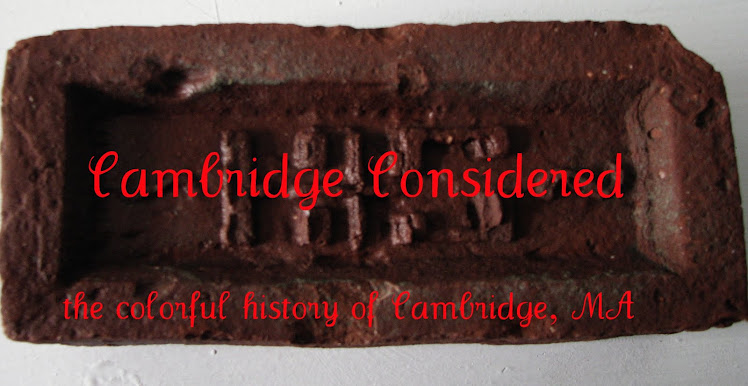On July 4th, I will be a guest blogger for Pamela Winnick, an author who focuses on the American Revolution. You can read my post, “That the People May be Universally Informed of It: reactions to the Declaration of Independence, 1776” at her blog, A Historical Novel About Jews During the American Revolution. For today, here's a bit about what was going on in Cambridge at that time.
Cambridge was a very important location in the American Revolution in 1774 and 1775, as I discussed in A Very Brief History of Cambridge, 1700-1800. The First and Second Provincial Congresses, presided over by John Hancock, and the first meeting of the Committee of Safety all took place in First Church Cambridge.1† Massachusetts was the first of all the colonies to create their own government in opposition to royal rule, and it was these Provincial Congresses that sent delegates to the Continental Congress. In February 1775, the Patriot Massachusetts government moved to Concord.
William Dawes, one of Paul Revere's fellow riders, rode through Cambridge on his midnight ride. After the Battle of Lexington and Concord, Cambridge became General George Washington made Cambridge his military headquarters, taking over many Harvard buildings, the former homes of Loyalists, and the common. In March 1776, British troops retreated from Boston after the Continental Army conducted a successful siege of the city, and the army headquarters was moved out of Cambridge in April.
William Dawes, one of Paul Revere's fellow riders, rode through Cambridge on his midnight ride. After the Battle of Lexington and Concord, Cambridge became General George Washington made Cambridge his military headquarters, taking over many Harvard buildings, the former homes of Loyalists, and the common. In March 1776, British troops retreated from Boston after the Continental Army conducted a successful siege of the city, and the army headquarters was moved out of Cambridge in April.
By July of 1776, it would probably be safe to say that Cambridge as a town was recovering from its role in the war, while many of its citizens were still actively involved in politics or fighting in the war itself. Eight out of the Declaration's fifty-six signers were Harvard alumni, but none of them lived in Cambridge.‡ I have not been able to find descriptions of how the people of Cambridge received the news, but ministers in Massachusetts of every denomination were ordered to read the Declaration after the service on the first Sunday after they received it.2 In Cambridge, that would have been at First Church, presumably on July 14. The other church in town had been the Anglican Christ Church. Most of its members were loyalists and not well-liked by many of the earlier settlers. It lost much of its congregation when loyalists fled the area during the war, and it was closed until 1790.3
The first official printing of the Declaration of Independence was by John Dunlap in Philadelphia. Although many Americans think of the handwritten, signed parchment copy of the Declaration as the original, this version was created after July 4, and it was the Dunlap broadsides (single-page publications) that John Hancock distributed to the colonies.4 You can see an image of the copy owned by the National Archives displayed online. One of the twenty-five other copies that still exist today is in the Houghton Library at Harvard.5
1Alexander, Constance Grosvener. “Historic Churches and Homes of Cambridge.” Merrill, Estelle, ed. Cambridge Sketches by Cambridge Authors. Cambridge Young Women’s Christian Association. (Boston: The Pinkham Press, 1896), 48.
†The 1649 building they met in no longer stands, but its predecessor was the one where Anne Hutchinson was tried, and it has two modern successors, First Parish Cambridge Unitarian Universalist and First Church Cambridge Congregational.
‡ John Adams, John Hancock, William Ellery, Elbridge Gerry, John Hancock, William Hooper, Robert Treat Paine, and William Williams.
2Maier, Pauline. American Scripture: Making the Declaration of Independence. (New York: Alfred A. Knopf, 1997), 159.
4Maier 159.
5http://www.cr.nps.gov/history/online_books/dube/inde14.htm.

No comments:
Post a Comment